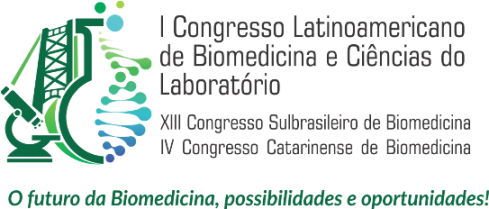Dados do Trabalho
Título
SUSCEPTIBILITY PROFILE OF CANDIDA TROPICALIS CLINICAL ISOLATES TO THE LMM6 COMPOUND AND CONVENTIONAL ANTIFUNGALS
Fundamentação/Introdução
Candida tropicalis has great medical relevance due to its important intrinsic virulence factors, records of resistance to conventional antifungals and limited therapeutic arsenal. In this way, the search for new therapeutic options is essential. Previous studies in our laboratory identified by drug repositioning, a compound (LMM6) having relevant antifungal activity against Candida spp., which may be candidate for the new drugs antifungals development.
Objetivos
To determined the susceptibility profile of Candida tropicalis isolates to the LMM6 compound and conventional antifungals.
Delineamento e Métodos
The minimum inhibitory concentration (MIC) was determined for LMM6 compound (256 - 0.5) and for the reference antifungals voriconazole (0.032 - 16μg/mL), fluconazole (0.125-64 μg/mL), amphotericin B (0.032 - 16μg/mL) and caspofungin (0.032-16 μg/mL) according to M27-A3 document of Clinical and Laboratory Standards Institute, against standard strain Candida tropicalis (ATCC 750) and seven clinical isolates contained in the Micoteca of Medical Mycology Laboratory. The cut-off levels for the conventional antifungals susceptible (S), dose-dependent susceptible (DDS) and resistant (R) were determined accordance with M27-S4 document.
Resultados
The LMM6 compound demonstrated important antifungal activity on all isolates of Candida tropicalis tested, with MICs ranging from 8 to 32 μg/mL. The MIC of all the isolates tested for amphotericin B was 0.25 μg/mL and for caspofungin, ranged from 0.125 to 1 μg/mL, these being susceptible of the antifungals. For fluconazole, one isolate had MIC greater than 60 μg/mL and the other MIC was 32 μg/mL, being considered R and DDS, respectively. The other 6 isolates were susceptible to the action of fluconazole with MICs ranging from 0.125 to 0.5 μg/mL. For voriconazole, two isolates had MICs greater than 4 μg/mL, being considered R. The other 6 isolates were susceptible to the action of voriconazole with MICs ranging from 0.03 to 0.06 μg/mL.
Conclusões/Considerações Finais
The LMM6 compound showed relevant antifungal efficiency against isolates resistant to the action of azole antifungals and also from isolates sensitive to these and other antifungal agents tested. It is noteworthy that although all isolates have been sensitive to the action of Amphotericin B, this drug has restricted use due to high toxicity. Thus, our findings may contribute to the development of new therapeutic options for Candida tropicalis infections.
Palavras-chave
Candida tropicalis; susceptibility profile; new compound; conventional antifungals
Área
Tema livre
Instituições
Universidade Estadual de Maringá - Paraná - Brasil
Autores
Raquel Cabral Melo, Daniella Renata Faria, Camila Barros Galinari, Patricia Souza Bonfim-Mendonça, Erika Seki Kioshima
